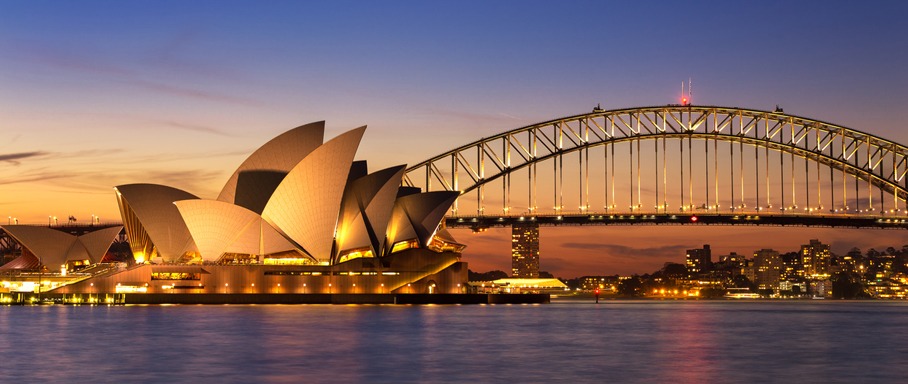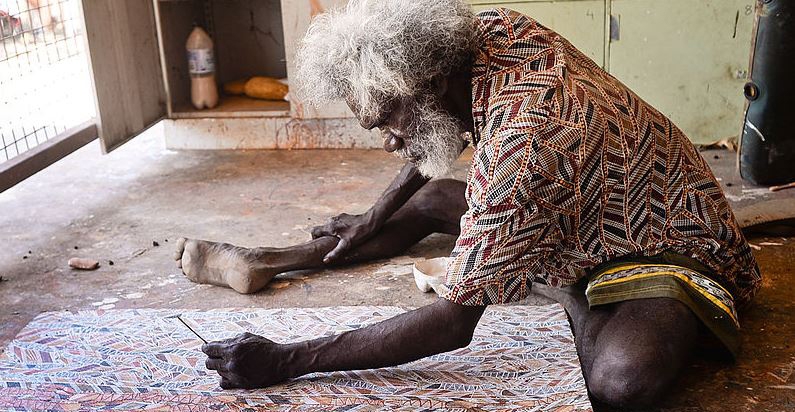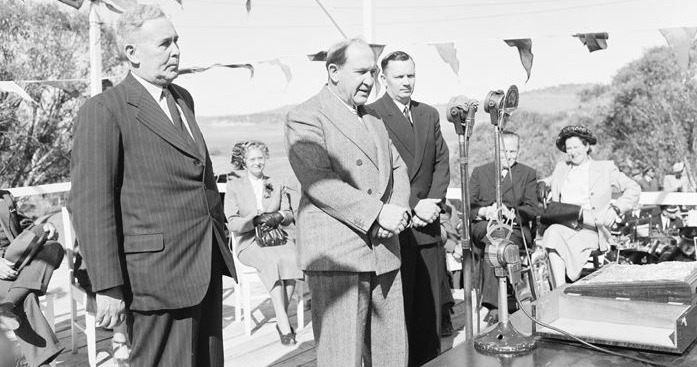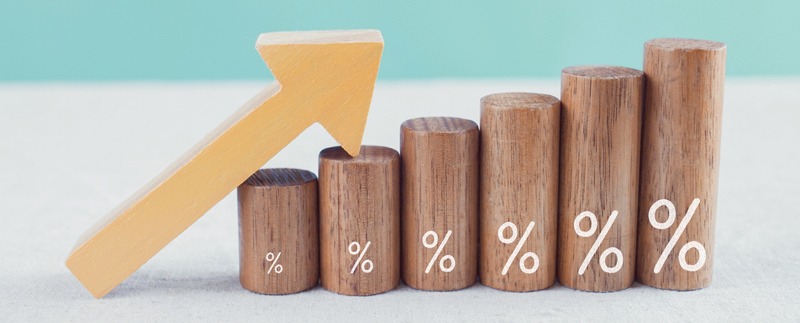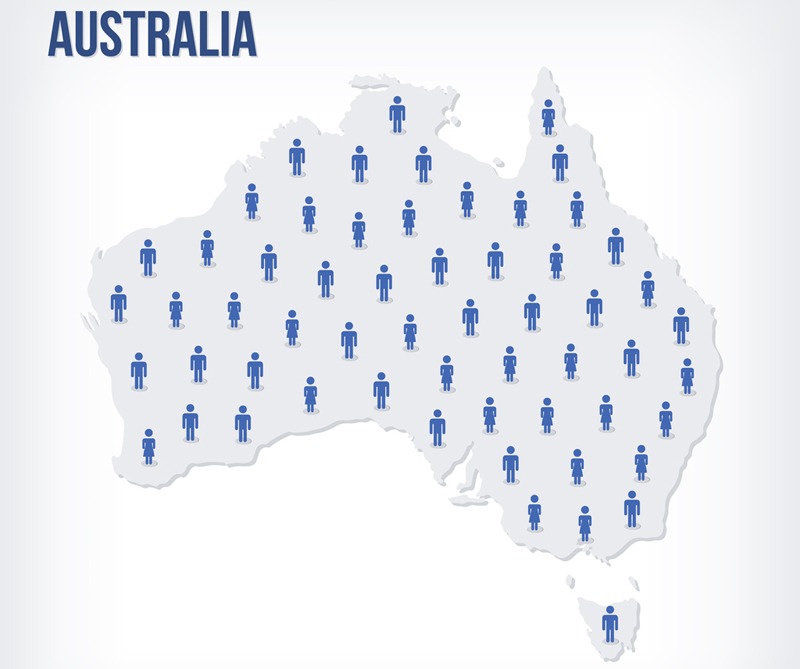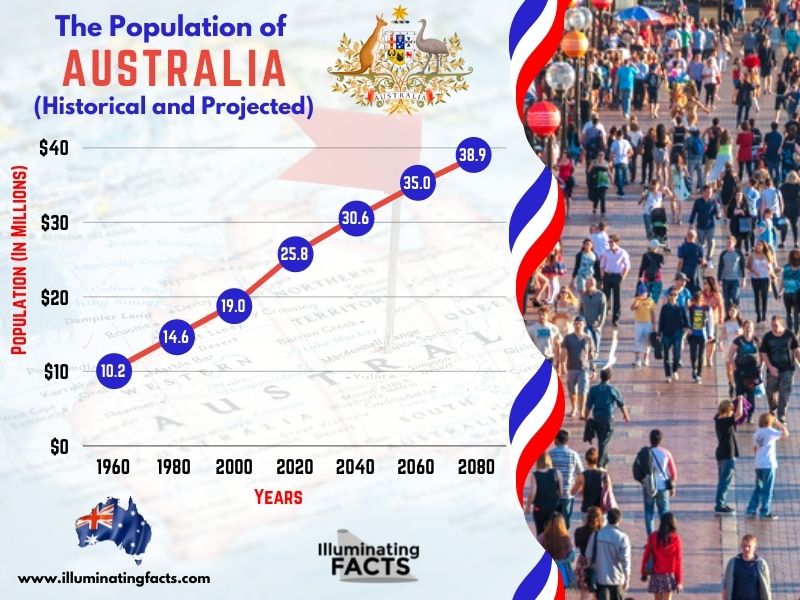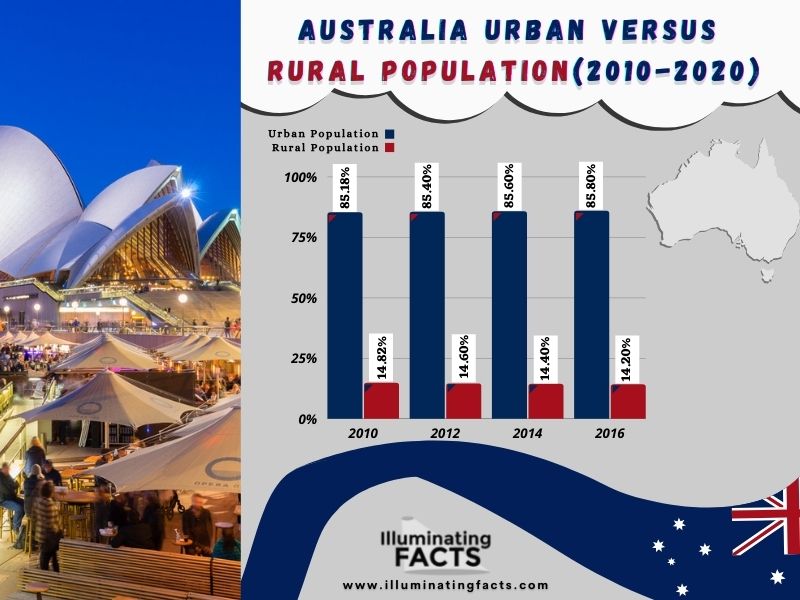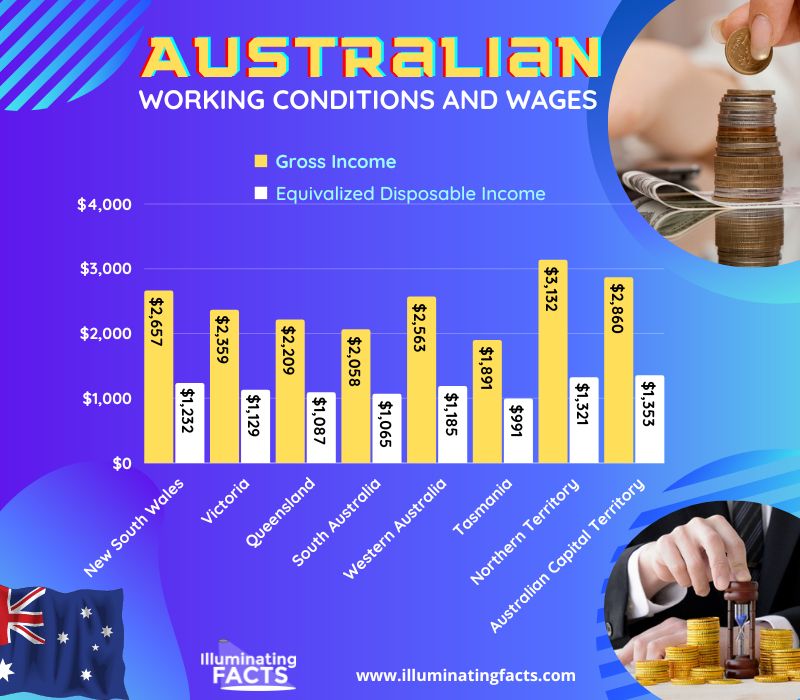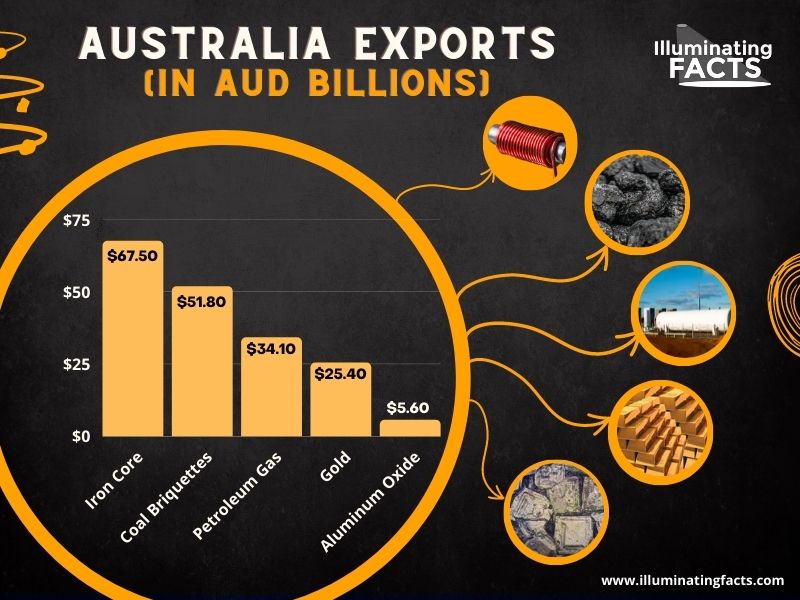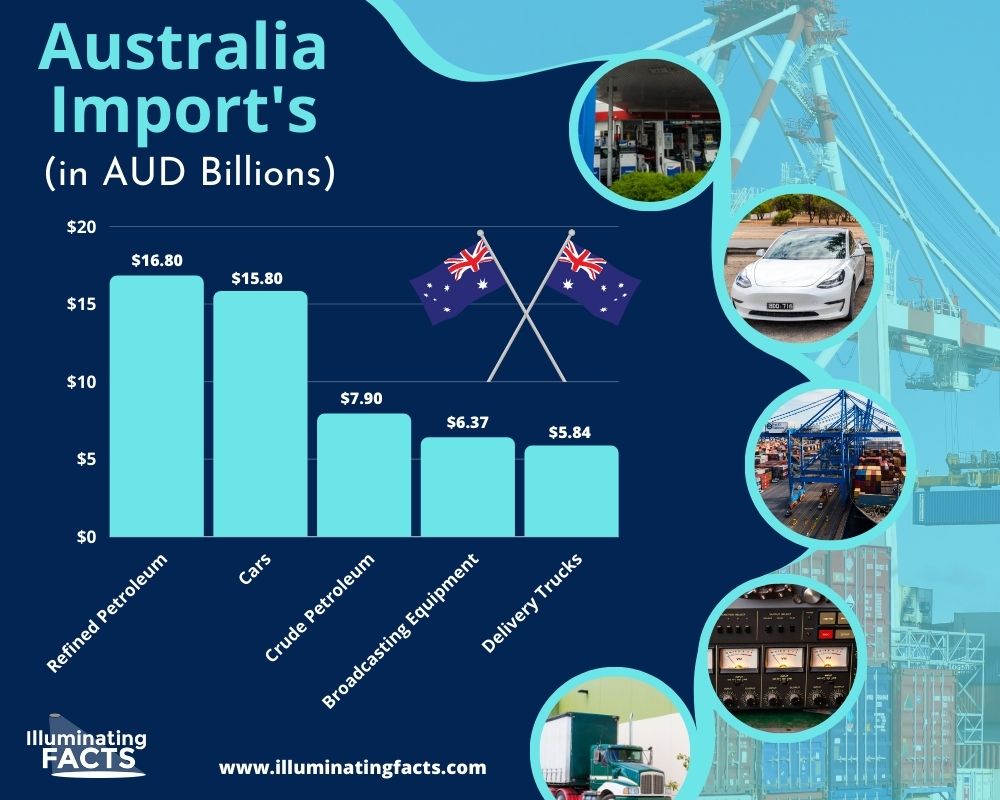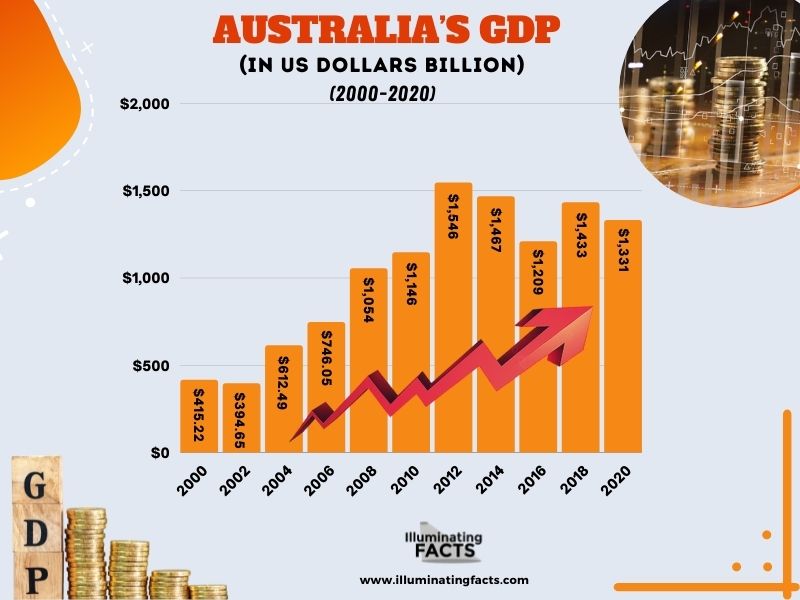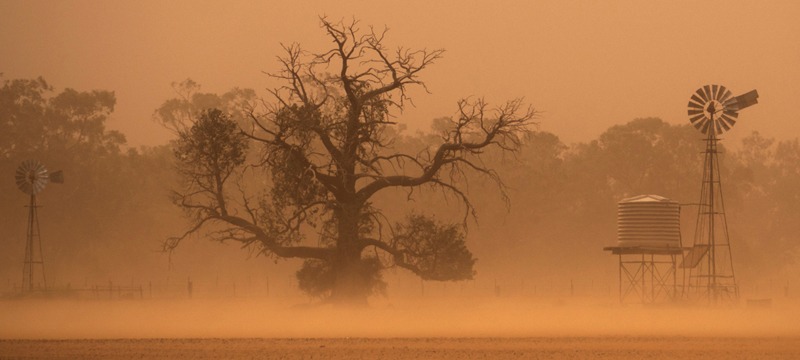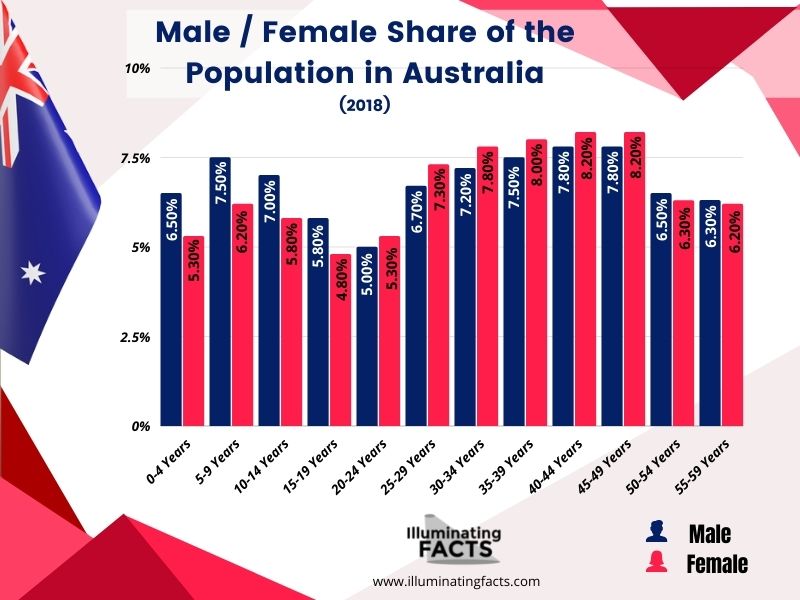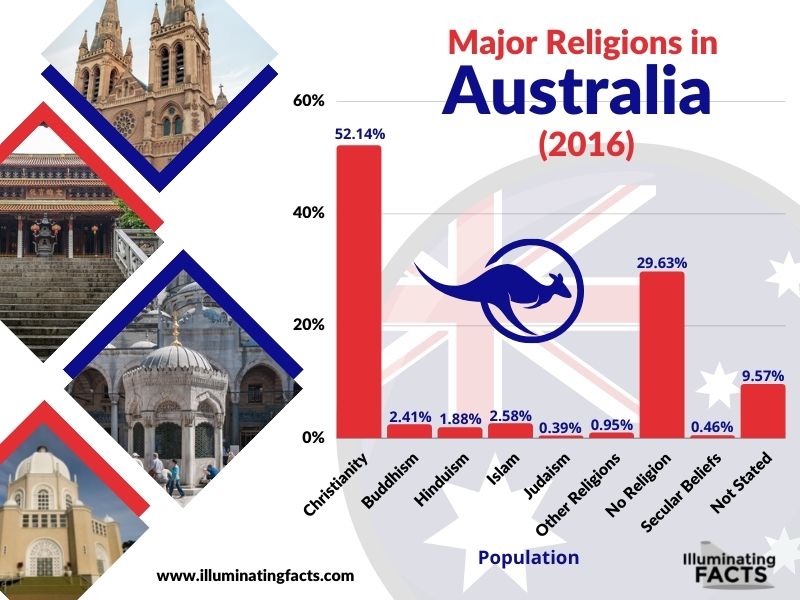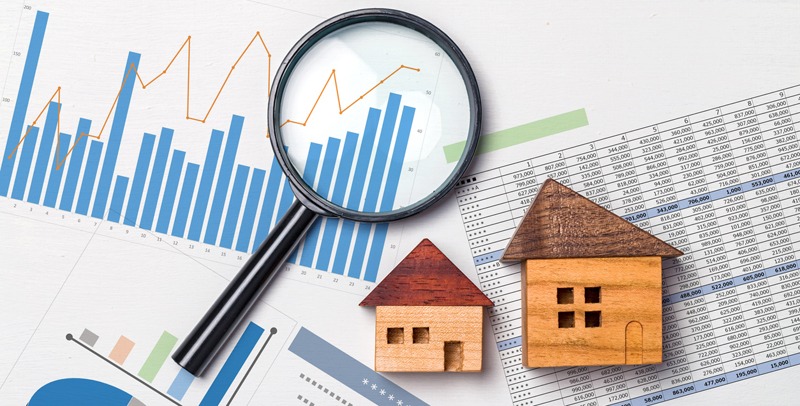A Brief Introduction to Australia
Australia, also called the land Down Under due to being below the equator, is not just a beautiful country but also a continent and an island. Australia is famous for providing a peaceful lifestyle, producing great sportsmen, and having a unique culture. It is such a diverse country that you can find almost all religions, ethnicities, and races here, making it one of the best countries to move to for a better life and good exposure. But what makes Australia so special is that it has a deep-rooted connection with its origins.
Around 7.6 million migrants live in Australia, and out of the total population, 29.8% of people were born outside the country[1].

Education in Australia concept, 3D rendering isolated on white background
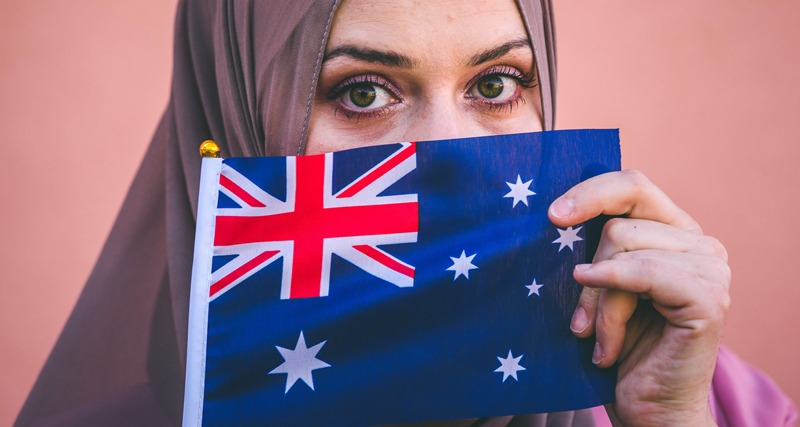
Muslim woman in hijab holds flag of Australia

Oceania Population
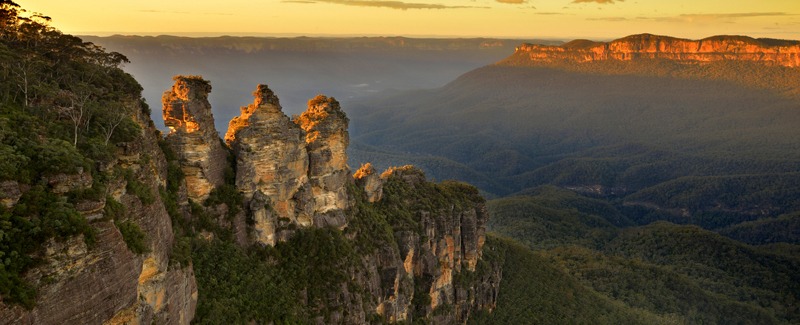
Sunrise in Blue Mountains
You can find a lot of information on the internet about Australia, its best places, food, etc., but what most people might not know is Australia in numbers, stats, and figures. Whether you are moving to Australia, interested in knowing more about it in detail, or other reasons, the data, facts, figures, and charts we have put together in this article will surely help. Let’s get started.
A Brief History of Australia
The history of Australia is not just interesting, and long, but also probably older than most other countries in the world, including the USA. In fact, most European, Asian, and African countries were formed after Australia[2].
The original settlers of the country, known as the aboriginal people, first occupied the land about 50,000 years ago. It was then mapped by the Europeans, Danish, Spanish, and English during the age of exploration. Australia was colonized by the British after Captain Cook arrived there and claimed the region for the British crown. After colonization, the country was divided into six different British colonies: New South Wales in 1788, Tasmania (1825), Western Australia (1829), South Australia (1836), Victoria (1851), and Queensland (1859).
Later on, these newly found colonies were named Australian Commonwealth states.
Historical Timeline (Important Events)
Aboriginal Origins
source: Mark Roy from Jabiru, Australia, CC BY 2.0, via Wikimedia Commons
Aboriginal Australians have been living in this piece of land for about 50,000 years, which means they have the oldest living cultural history in the world. When the British first arrived and colonized Australia, about 250 different languages were spoken across the nation.
Before the arrival of the British in Australia, about 300,000 to 1 million aboriginal people used to live in Australia.
The 1780s-1850s
source: Nathaniel Dance-Holland, Public domain, via Wikimedia Commons
Before Captain James Cook claimed the land for the British crown in 1770, the Dutch first sighted Australia in 1606. In 1788, the first fleet of 11 boats arrived at Botany Bay to establish a penal colony in New South Wales (NSW). It received convicts from Great Britain (GB) until 1848, after which they were sent to the other states except for South Australia, which was a free colony. More than 162,000 convicts were transferred from the GB to Australia (mainly Tasmania and NSW).
Later in the 1850s, Australia started to become a desirable location to many people, thanks to the discoveries of gold that kick-started the economy. In 1854, the Eureka Stockade occurred, instigated by gold miners in Ballarat. They revolted against the colonial authority of the UK that some see as a crucial event in the history of Australia’s democracy.
This was also the period when many Chinese immigrated to Australia and established many Chinatowns.
1901 to 1915
In 1901, the Commonwealth of Australia was founded with the Federation of all the states. The members agreed that the capital would be somewhere in NSW but no closer than 100 kilometers from Sydney. Therefore, Canberra was created as the capital, and the parliament was set up in Melbourne for 27 years. However, it was only temporary.
Fiji and New Zealand were also invited to join the Federation, but they both rejected the invitations.
In 1915, the Australian and New Zealand Army Corps (ANZAC) took part in the World War I Gallipoli Campaign. Although they got defeated, the battle did well in defining the characteristics of Australians. Almost 39% of Australian men participated in World War I (between 18 and 44 years).
1945 to Late 20th Century
After World War II and the Vietnam War, many people migrated to Australia for a better life. This led to the foundation of the Snowy Mountains Scheme (from 1949 to 1974), which employed about 100,000 people, among which 70% were migrants from 30 nations.
Due to the increase in migrants and better employment, the Australian economy boomed. The Australian National University was also founded during that time in 1946. Later on, in 1973, the iconic Sydney Opera House was opened to the public in 1973.
After the Wars, when people were left homeless in Europe, they were all welcomed in Australia. However, Asians were not. Those Asians who fled to Australia were deported by the government. Sadly, the Minister of Immigration, Arthur Calwell, said, “Two Wongs do not make a white,” which was quite racist of him. The Asians started migrating to Australia in the 1970s, and now people from all over the world call Australia their home.
Before 1959, the Aboriginal Australians weren’t even allowed welfare benefits and to vote. However, things changed after 1959, and they were provided welfare benefits and allowed to vote for the first time in 1962. In 1971, Aboriginal Australians were included in the census for the first time in the history of Australia.
Australia in the 21st Century
The unemployment rate in Australia was high in the 1990s, but things started to get better at the beginning of the 21st century. Today, the situation is a lot better, and people from all over the world prefer moving to Australia for a better life and jobs.
The Population of Australia
Australia’s current population is 25,881,464 (as of 26 October 2021)[3]. Current projections show that the population of Australia will continue to grow steadily for the rest of the century. It is projected to grow to 42.68 million by 2099.
Moreover, Australia’s population growth is 1.18%, adding about 296K people to the total population over 2019’s population. This is the result of both natural increase and net migration, which has been increasing for the past few years. Among OECD countries for population growth, Australia stands fifth. Like the other countries with a high growth rate, Australia also has a strong labor demand, which unfortunately cannot be met with domestic resources. Therefore, more and more people are encouraged to come to Australia to fill a plethora of vacancies.
Australia is three times more populous than its neighboring country, Papua New Guinea, and 5 times more populous than New Zealand. Despite being the sixth-largest country in the world, Australia has a very low population density of just three people per square kilometer (seven square miles). This makes it one of the least populated countries in the world compared to its land area.
Figure 1: Data by: Macro Trends[4]
Australian Population by City (Top 10)
| Name | Population (2021) |
| Sydney | 4,627,345 |
| Melbourne | 4,246,375 |
| Brisbane | 2,189,878 |
| Perth | 1,896,548 |
| Adelaide | 1,225,235 |
| Gold Coast | 591,473 |
| Canberra | 367,752 |
| Newcastle | 308,308 |
| Wollongong | 292,190 |
| Logan City | 282,673 |
Figure 2: Data by: World Population Review[5]
Australia’s cities are located within its six states: South Australia, New South Wales, Victoria, Queensland, Tasmania, and Western Australia. When Australia’s census is taken to get official demographics and numbers, the figures cover all the six states along with three territories, Christmas Island and Cocos Island.
The most populous cities of Australia are located within three states: Queensland, New South Wales, and Victoria, while the islands have a population of fewer than 5,000 people. According to the statistics of 2014, around 10% of the population lived in rural areas, showing a decrease compared to previous years as more and more people prefer living in big cities[6].
Melbourne, the coastal capital of Victoria; Sydney, the capital of New South Wales, are the two most populous cities in Australia. Despite being the capital of Australia, Canberra has the least population. However, it is Australia’s largest and fastest-growing inland city.
Australia – Urban and Rural Population (2010-2020)
Figure 3: Data By: The World Bank[7]
Education Sector of Australia
International Students
The government stats show that the number of international students has experienced a decent growth of 10% since October 2018 (as of October 2019). Moreover, the number of international students continues to grow compared to the previous years. More specifically, it has changed drastically since 2015, almost 58%[8].
Although Australia is home to foreign students from all over the world, some countries have distinctive numbers of students enrolled in Australian universities.
According to this 2019 data, Monash University, located in Melbourne, has the highest number of international students enrolled in various fields of study. On the other hand, the University of Sydney has the highest international student proportion compared to the total number of enrolled students.
International students are one of the key players that add to the economy of Australia. From 2018 to 2019, the international students added about 37.6 billion Australian dollars to the Australian economy.
Domestic Students
According to the data collected by Statista, 338,960 domestic students enrolled at universities in NSW only. The least students were enrolled at universities located in the Northern Territory of Australia[9]. Hence this data tells us that most domestic students of Australia prefer studying at the universities of New South Wales.
Australian Working Conditions and Wages
Australian working conditions and jobs are considered some of the best in the world. According to Statista, Australians’ gross weekly household income (average) was about AUD 2,445 in the 2018 fiscal year. On the other hand, Tasmania is the only state or territory with an average gross household income below AUD 2,000[10].
Economy of Australia
Australia established a reputation of being a wealthy underpopulated country during the first century of European settlement. Despite being prone to natural disasters, its economy is heavily dependent on agriculture and foreign investment. Although wheat, beef, lamb, and dairy produce also became important, none can challenge the key importance of farming and grazing.
However, this image of a wealthy, underpopulated country was shattered by manufacturing and service growth, especially after World War II.
Although the Australian government has tried its best to intervene in the country’s economy, in general, the economy has been dominated by foreign interests, especially by those of the USA, UK, Japan, and giant multinational corporations.
In other words, Australia is a trade-exposed country – meaning that the changes in demand for goods and services in other countries can significantly affect Australia’s economy. For example, if an increase in the worldwide demand for Australia’s exports is not matched by the increase in the supply, it might result in an increase in the price of those exports.
In 2019, Australia’s economy was #13 in GDP, #23 in total imports, #19 in total exports, and #12 in GDP per capita.
The ratio of export prices to import prices is called the “Terms of Trade,” which we will discuss later in this article.
Exports
According to OEC[12], the top exports of Australia are:
Figure 5: Data by: OEC[13]
Imports
According to OEC, the total imports of Australia are:
Figure 6: Data by: OEC[14]
Australia’s GDP
According to the Australian Bureau of Statistics, Australia’s Gross Domestic Product (GDP) increased by 9.60% in the second quarter of 2021 compared to the same period of the previous year[16].
According to official data from the World Bank, the GDP of Australia was worth 1.331 trillion US dollars in the year 2020. Moreover, Australia has a contribution of 1.18% to the world economy.
Figure 8: Data By: The World Bank[17]
Climate of Australia
Australia offers a wide range of climate zones, from the tropical regions of the north to the temperature regions of the south. After Antarctica, Australia is the world’s driest continent, with an average mean annual rainfall below 600mm (over 80% of Australia) and below 300mm (over 50%).
Summers throughout the country are quite hot, with average temperatures in January exceeding 30°C except for the southern coastal fringe. Winters are cooler in the south and warmer in the north.
In northern Australia, temperatures remain warm throughout the year, with a “wet season” from November through April. On the other hand, the “dry season” is from May through October.
Moreover, Australia is one of those countries that experience nature’s extreme weather phenomena, including tropical cyclones, droughts, severe storms, floods, bushfires, and occasional tornadoes.
According to the Australian Bureau of Statistics, the following is a chart showing the mean temperatures and rainfall in Australian regions from 1950 to 2009[18]:
According to the 10-year data, we can see that Australia received the highest rainfall between 1970 and 1979, and the lowest was from 1960 to 1969[19]. Moreover, the mean temperatures have been rising in Australia since 1980, and it is getting hotter day after day.
Apart from global warming, Australian bushfires also play a major role in raising the country’s temperatures.
Nature of Australia
Land
Australia has some of the oldest land areas in the world. Its total land size is 7.692 million km². While being rich in biodiversity, the continent’s seas and soils are among the most unproductive and nutrient-poor in the world; the credit goes to Australia’s geological stability – a major feature of the Australian landmass. Unfortunately, only 6% of the Australian landmass is arable.
Moreover, Australian soils depend on vegetation cover for stability and to generate nutrients. Poor soil conservation, land clearing, and water extraction are some causes of a decline in Australia’s soil quality.
Water
Australia is the second driest continent on earth, with the least amount of water in rivers. Apart from that, human activities also continue to put pressure on marine life and environments. In addition, pollution is a big problem. Most marine pollution is caused by land-based activities, such as intensive animal production, soil erosion, fertilizer use, sewage, and other industrial discharges.
Australia’s marine environment is home to 500 coral species in the northern reefs only, 4,000 fish species, 50 types of marine mammals, and a variety of seabirds. It is estimated that almost 80% of marine species found in Southern Australian waters are found nowhere else on the earth.
Flora and Fauna
Hummock grasslands are the dominant type of vegetation in Australia (almost 23%), mostly found in Western Australia, South Australia, and northern territory. In the east, eucalypt woodlands are widespread, while in the west, Acacia forests, shrublands, and woodlands are prevalent.
Moreover, you can find more than 828 species of birds, 140 species of snakes, 378 species of mammals, 300 species of lizards, and 2 species of crocodiles in Australia. The best-known animals in Australia include kangaroos, dingo, platypus, koalas, wombats, wallabies, and echidna[20].
Demographics and Ethnic Groups of Australia
Today’s immigration policy of Australia promotes multiculturalism and encourages residency status among people of various ethnic backgrounds. Thanks to the diversity in Australia, over 200 languages are spoken there. However, some Australians have raised their voice against increased immigration levels, especially from Asian countries.
The government listened to the natives, adopted multicultural policies, and recognized the immigrants’ structural violence against the natives.
Ethnic Background of Australia
Figure 9: Data By: World Atlas[21]
As of 2019, there were 67.40% more British people living in Australia than any other ethnicities. After the British, the Irish ranked at number 2, having a share of about 8.7% of the total population of Australia[22].
Languages and Religions in Australia
Interestingly, Australia has no national language. Australians value the English language as the national language of their country, which makes it a de facto national language. Several aboriginal languages might have become extinct since 1950, and most surviving languages may have a few speakers.
Mabuiag is spoken in the western Torres Strait Islands, while the Western Desert language has about 4,000 speakers. In addition to these languages, the languages of immigrant groups are also spoken, including Chinese, Greek, Urdu, Hindi, and Italian.
Major Religions in Australia
According to the 2016 census, Christianity was the major religion found in Australia; reportedly, 52% of Australia’s population were Christians. 8% of the population were non-Christians, and about 39% of the population had no religion or did not state their religion[23].
Figure 10-: Data By: ABS[24]
Some More Statistics
Household Income and Wealth
Compared to the mean weekly equivalized disposable household income of 2015-2016, which was 1,046 AUD, the mean income of 2017-2018 increased to 1,062 AUD. Moreover, the mean household net worth from 2015 to 2016 was 964,000 AUD, which increased to 1,022,000 AUD during the 2017-2018 fiscal year – that’s a 6.0166% increase from the last fiscal year[25].
Labor Costs
During the financial year 2015-2016, the total labor costs incurred by employers were $760.9 billion. This cost is a sum of both the private and public sectors. The labor costs of the private sector were $591,359, while it was $169,581 for the public sector.
Interesting Facts about Australia
- Australia is a big country with so many beautiful beaches. So big that even if you visit one beach a day, it will take you about 27 years to see them all.
- The largest Greek population in the world, besides Athens, can be found in Melbourne, Victoria.
- Australia has 3X more sheep than its inhabitants.
- Love snowfall? Put Australia on your list, too, because the Australian Alps receive more snowfall compared to Switzerland.
- Australia was the second country in the world that gave women the right to vote in 1894.
- 20 percent of the world’s poker machines are found in Australian casinos. Also, Australians spend more money on gambling than any other nation (Per Capita).
- Canberra was selected as the capital of Australia because Melbourne and Sydney could just not stop arguing about which city should be made the capital.
- The world’s longest fence can be seen in Australia (5,614km long), which is even longer than the Great Wall of China. It was originally made to keep dingos (Australian wild dogs) away from fertile land.
- Melbourne was made the capital of Australia for 27 years between 1901 and 1927. After this, Canberra was made the capital.
- 17 of the world’s most dangerous snakes are found in Australia.
- Australia is home to more camels than Egypt.
- Despite being a large continent, 90% of the Australian population lives on the coast because the major part of the interior is a vast desert.
- The average Australian would eat the equivalent of 90 full sheep of 18 full cows in their lifetime.
- Australians are beer lovers! The average Australian would drink about 83 liters of beer per year.
- Australia has the largest cattle ranch – which is even bigger than the entire country of Belgium.
- The Great Barrier Reef is considered one of the world’s largest living organisms. Also, it is often listed as one of the Seven Wonders of the Natural World.
- Tasmania, an Australian state, is known for having the world’s cleanest air.
- Melbourne is home to the largest public tram system in the world.
- The Gold Coast has the world’s largest canal system – even larger than those of Amsterdam and Venice combined.
- Australia is the only continent in the world without an active volcano.
- Between 1838 and 1902, it was considered illegal to swim at public beaches in Sydney and other parts of NSW during daylight.
- It took 14 years to build the Sydney Opera House.
- Australia is the sixth-largest country and the biggest island in the world.
- Aboriginal Australians, the native tribes of Australia, spoke around 200 different languages and dialects.
- Australian Rules Football (ARF) was founded to keep the cricketers fit in the off-season.
Australia – A Beautiful, Diverse Nation
Australia is a unique and diverse country in several ways: culture, population, geography, climate, and history. Home to people belonging to various ethnicities, Australia welcomes everyone with open arms. People move to Australia to live a better life and have high-paying jobs.
As seen in the data, facts, and figures we mentioned above, Australia has been in the downfalls, but it has risen again with more strength than before. Although it is the second driest continent of the world that has to face a plethora of natural disasters, it still is better than most countries in providing the best facilities to its inhabitants; hence why more and more people choose to migrate to Australia.
References
[1] “Migration, Australia”. Retrieved from https://www.abs.gov.au/statistics/people/population/migration-australia/latest-release
[2] Chris Hall (11 May 2017), “Is Australia A Young Country?” Retrieved from: https://www.universitybridgeproject.org/blog/2017/5/9/why-australia-is-older-than-your-country
[3] “Australia Population 2021 (Live).” Retrieved from: https://worldpopulationreview.com/countries/australia-population
[4] “Australia Population 1950-2021.” Retrieved from https://www.macrotrends.net/countries/AUS/australia/population
[5] “Population of Cities in Australia (2021).” Retrieved from https://worldpopulationreview.com/countries/cities/australia
[6] “Australia – Rural Population.” Retrieved from: https://tradingeconomics.com/australia/rural-population-percent-of-total-population-wb-data.html
[7] “Urban population (% of total population) – Australia.” Retrieved from https://data.worldbank.org/indicator/SP.URB.TOTL.IN.ZS?end=2020&locations=AU&name_desc=false&start=2010&view=chart
[8] “International Student in Australia Statistics.” Retrieved from: https://www.studying-in-australia.org/international-student-in-australia-statistics/
[9] “Number of domestic students enrolled in universities in Australia in 2019, by state.” Retrieved from https://www.statista.com/statistics/983934/number-domestic-university-students-by-state-australia/
[10] “Breakdown of the weekly mean household income in Australia in the financial year 2018, by state.” Retrieved from: https://www.statista.com/statistics/798163/australia-mean-income-by-state/
[11] “Breakdown of the weekly mean household income in Australia in the financial year 2018, by state.” Retrieved from https://www.statista.com/statistics/798163/australia-mean-income-by-state/
[12] “Australia.” Retrieved from: https://oec.world/en/profile/country/aus
[13] “Australia.” Retrieved from https://oec.world/en/profile/country/aus
[14] “Australia.” Retrieved from https://oec.world/en/profile/country/aus
[15] “Australia: Terms of trade.” Retrieved from https://www.theglobaleconomy.com/Australia/Terms_of_trade/
[16] “Australia GDP Annual Growth Rate.” Retrieved from: https://tradingeconomics.com/australia/gdp-growth-annual
[17] “GDP (current US$) – Australia.” Retrieved from https://data.worldbank.org/indicator/NY.GDP.MKTP.CD?end=2020&locations=AU&start=2000&view=chart
[18] “Australia’s Climate.” Retrieved from: https://www.abs.gov.au/ausstats/abs@.nsf/lookup/1301.0main+features1432012
[19] “Geography and Climate.” Retrieved from https://www.abs.gov.au/ausstats/abs@.nsf/lookup/1301.0main+features1432012
[20] “Our natural environment.” Retrieved from: https://info.australia.gov.au/about-australia/our-country/our-natural-environment
[21] “Demographics and Ethnic Groups of Australia.” Retrieved from https://www.worldatlas.com/articles/ethnic-background-of-australians.html
[22] “Demographics and Ethnic Groups of Australia.” Retrieved from https://www.worldatlas.com/articles/ethnic-background-of-australians.html
[23] “ABS 2016 Census.” Retrieved from: https://www.abs.gov.au/websitedbs/censushome.nsf/home/2016
[24] “2016 Census Australia.” Retrieved from https://www.abs.gov.au/websitedbs/censushome.nsf/home/2016
[25] “Household Income and Wealth, Australia.” Retrieved from: https://www.abs.gov.au/statistics/economy/finance/household-income-and-wealth-australia/2017-18

